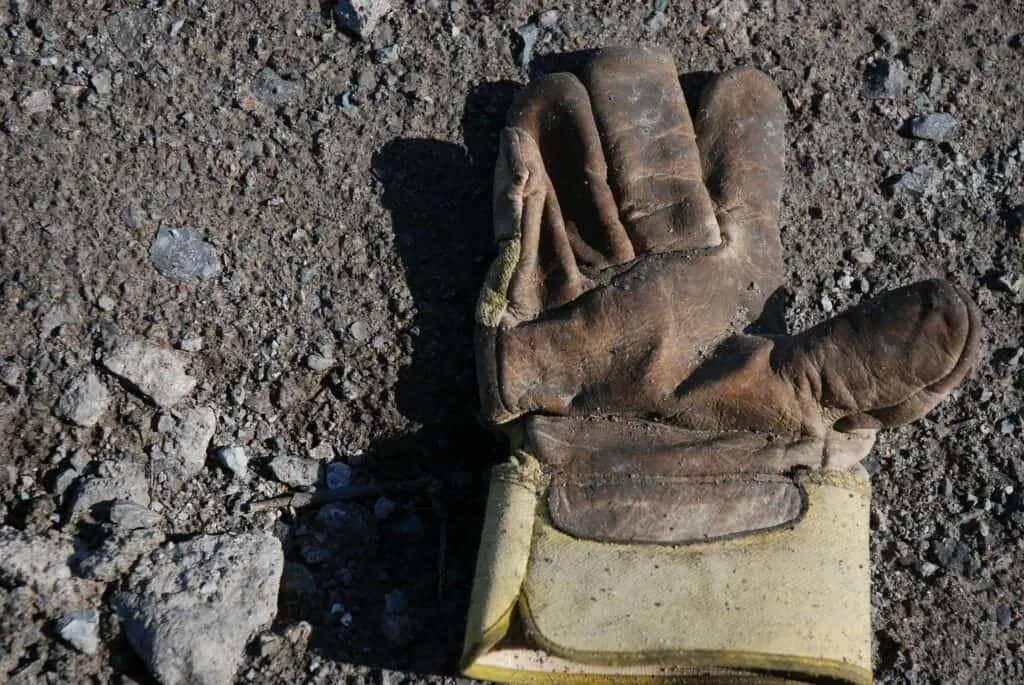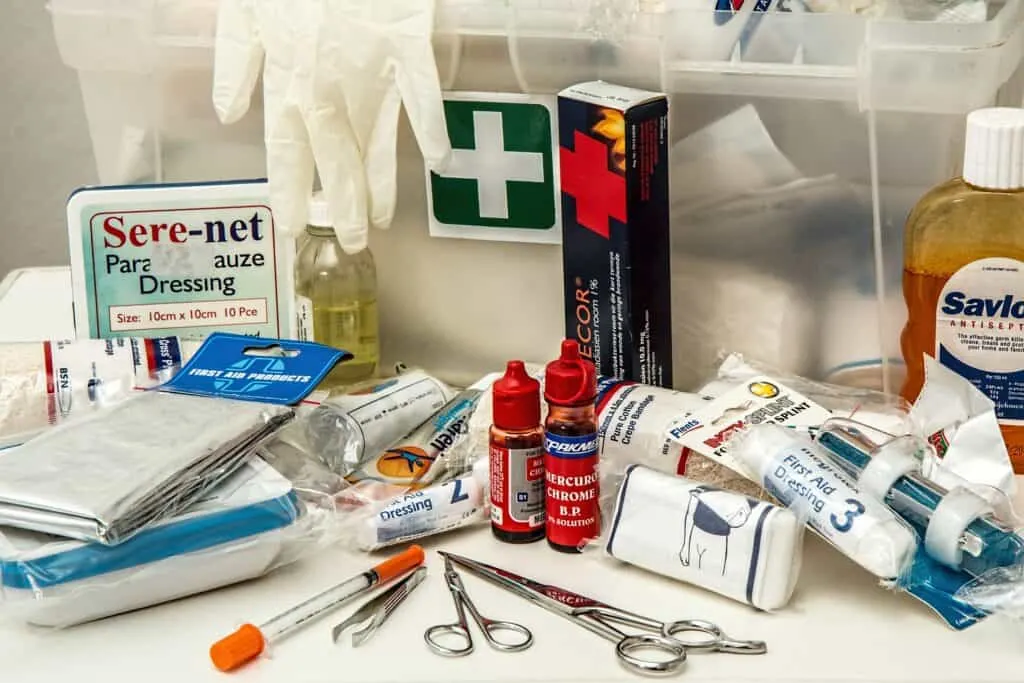As an Amazon Associate, I earn from qualifying purchases with no additional costs for you.
Rockhounding can be an extremely enjoyable and rewarding hobby; it helps relieve stress and is usually calming. However, the trip can be frustrating if you do not use the right equipment or take certain precautions. Specific tools are necessary to have on you at all times to prevent injuries or fix a problem if the need arises.
While there is a laundry list of safety equipment you can get for rockhounding, a few are most important to keep you alive. These items would be considered most important for preventing and managing injuries should one occur.
- Hardhat
- Safety Goggles
- Snakebite Kit
- First Aid Kit
You need more than 4 pieces of safety equipment for your trip. While those are most important to help with the most sensitive parts of your body, you must protect and prepare for every scenario you encounter. Sometimes, it may seem overkill; however, when you need these items the most, you’ll be thankful you have them.

If you want to check out the best rock-hounding safety equipment, you can find them by clicking here (Amazon link).
What Safety Equipment Do You Need for Rockhounding?
Like any hobby, rockhounding requires certain equipment for you to be able to enjoy it to the fullest extent. Rockhounding may have a longer list than other hobbies, but every piece of equipment is needed and worth taking with you.
- Hard Hat
You must protect your head when you are in areas with low-hanging or falling rocks. A hard hat can save you from a traumatic brain injury or a simple concussion. Either way, wearing a hard hat can ensure that if anything falls, your brain won’t take a ton of damage, if any.
- Thick Durable Gloves
Since you will be breaking rocks, you will likely experience sharp corners and fragments that can cause cuts or scrapes. Wearing thick, durable gloves will save your hands from being too damaged and maybe even prevent you from pulling out your first aid kit.
- Sun Hat and Sunscreen
While sunscreen is very beneficial, your ears, scalp, and face are sensitive. This hat can also help shield your eyes from harmful UV rays. Any hat that has a wide brim can be considered a sun hat.
- Sunglasses
Sun damage can cause blindness, and even limited exposure to the sun can cause eye sensitivity. Wearing sunglasses (polarized is recommended) can prevent your eyes from being damaged and prevent you from having vision problems later in life.
- Safety Goggles
When you hit rocks with hammers at high velocities, you will experience some fast-moving fragments that can damage your eyes. Safety goggles are designed to protect things from hitting your eyes from above, below, or right in front of you. They are larger than sunglasses and thicker than most other glasses so that they don’t break if they are hit by something.
- Sturdy Shoes
Buying shoes with soles that don’t allow nails or sharp objects through is recommended. You never know what you may encounter in some locations, and if your feet are injured, this can make your trip especially difficult due to your need to walk to get home or to your starting location.
- Face Mask
Anytime you break apart rocks or dirt, particles will move through the air. Without a mask, you risk inhaling these particles that can contain dangerous materials or cause breathing issues. A mask helps filter these particles out so you can breathe clean air while searching for rocks.
- Knee Pads
Like your shoes or gloves, knee pads can help reduce injury or irritation from sitting in awkward positions. If you already have knee problems, this will reduce the pressure if you need to sit on your knees for any amount of time.
- Head Lamp
Searching through caves or mines usually means a limited natural light source. This can obviously cause issues because you need to be aware of your surroundings. Wearing a headlamp allows you to have adequate light while keeping your hands free to move around safely.
- Noise Device
Most of the time, if you make your presence known to wildlife, they will run away from you, and you will not encounter them. Usually, when an animal attacks, it is because they feel threatened or frightened by you. Wearing a bell or something that jingles on your belt or bag makes your presence known to wildlife to reduce the risk of attacks.
A Quick Equipment Breakdown
While these products alone may not be too costly, you are looking at a pretty decent price tag when you total them together. While it may seem like you can omit some of these, it is recommended that you fully stock your equipment with one of these products (Amazon links).
TIP: Minerals’ streak is one of the most important tests for mineral identification. Check out how to test minerals’ streak in the article below:
DIY Guide: Testing Mineral’s Streak (Explained by Expert)
Emergency Kits for Rockhounding

The safety equipment listed above protects you from being injured. But what about when you or your rockhounding partner got injured? In these cases, the emergency kits listed below can greatly help you.
- In Of Emergency Kit (ICE)
It is always a good idea to have an extra pack that contains one of everything you already have. In dire emergencies, you won’t need to stress about running out of things since this would be something you only open in the most extreme circumstances.
Most people pack up this kit and never have to open it except to replace their water or food so it doesn’t spoil. Most people prefer to pack their own kit, but you can also buy prepackaged ones.
If you choose to pack your own kit, you can customize it depending on where you will be hunting for rocks. If you were going somewhere colder, you could include some blankets or fire starters, whereas if you were going somewhere hotter, you could bring extra water, a battery-operated fan, and a tent to shield yourself from the sun.
- Snakebite Kit
If you get bitten by a snake, the best thing to do is try to get the venom out while restricting blood flow back to your heart from the bitten area. This can save a limb and, in some cases, your life.
- First Aid Kit
Now, a first aid kit will include a few more items to help with a larger variety of injuries, for a deeper cut that needs stitches or even a large superficial cut that simply needs a larger bandage. This will also contain medicine for pain, swelling, and itchiness.
A Quick Emergency Kits Breakdown (Amazon links):
| Emergency Kit | Purchase options | Includes |
|---|---|---|
| In Case of Emergency Kit (Prepacked) | ● Food Rations ● Extra Water ● Blankets ● Flashlights ● Poncho ● Whistle ● Multitool ● Extra First Aid Supplies | ● Food Rations ● Extra Water ● Blankets ● Flashlights ● Poncho ● Whistle ● Multitool ● Extra First AId Supplies |
| First Aid Kit | ● AAA First Aid Kit ● First aid Only Kit ● Monoki First Aid | ● Bandaids ● Alcohol Wipes ● Suture Kit ● Cotton Swabs ● Medical Tape ● Tweezers ● Ace Wraps ● Large Waterproof Bandages ● Tylenol or ibuprofen ● Benadryl |
| Snakebite Kit | ● Coghlans Snakebit Kit ● First Aid Snake Pump ● Snakebit and Sting Kit | ● Suction cups ● Scalpel ● Constriction Band ● Antiseptic |
BTW: Do you want to know more about rock and mineral identification? The books listed below are the best ones you can find on the internet (Amazon links):
- Smithsonian Handbooks: Rocks & Minerals
- Gemstone & Crystal Properties (Quick Study Home)
- Ultimate Explorer Field Guide: Rocks and Minerals (National Geographic Kids)
What Else Do You Need?
After you’ve finished gathering your safety equipment, you will need equipment to help you dig, break, and find rocks. The safety stuff won’t be necessary without this equipment because you cannot search for anything.
- Strong, durable backpack capable of carrying heavyweight
- Rock Pick
- Chisel
- Notebook and Pen (waterproof is recommended)
- Hammers
- Small brush or broom
- Pocket Tools – Anything that can be used to help retrieve a specimen from a deep hole or pocket in a cave
- Bags or containers to carry and organize your rocks
- Sledgehammer
- Crack Hammer
As you get more comfortable with rockhounding, you can figure out the best products and supplies for exactly what you need. Starting with the basics is always the best option to learn and grow without spending too much money upfront.
TIP: I wrote a complete guide on recommended rock hammers, picks, chisels & bars for rockhounding. In addition, don’t forget to check out my articles about additional (but very useful) tools for rockhounding. You can read these articles here:
Recommended Rock Hammers, Picks, Chisels & Bars For Rockhounding
Best Shovels, Brushes, Sample Bags & More for Rockhounding
Recommended Dichroscopes, Hand Lens, and UV Lamps for Rockhounding
Wrapping up Rockhounding Safety
When you prioritize safety in any situation, you lower the risk of needing any safety equipment. However, you may never know when someone else, or even yourself, slips up and needs something. The right safety supplies can sometimes be the difference between life and death.
Research and common knowledge of the area can also be the difference between an enjoyable time and an emergent situation. Making sure you know the area or going with someone who does can alleviate any unforeseeable issue that can pop up.
TIP: Read also about PRO tips for beginner and experienced rockhounds + tips for safety rockhounding:
PRO Tips for Beginner & Experienced Rockhounds + Safety Tips
